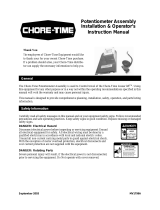Miller ROBOT INTERFACE NSPR 8933, KA000000 Owner's manual
-
Hello! I am an AI chatbot trained to assist you with the Miller ROBOT INTERFACE NSPR 8933 Owner's manual. I’ve already reviewed the document and can help you find the information you need or explain it in simple terms. Just ask your questions, and providing more details will help me assist you more effectively!





















